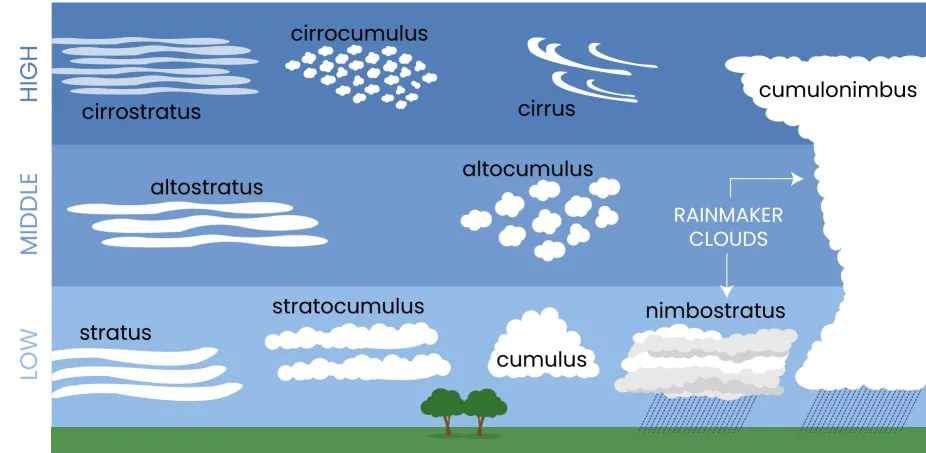I came across a book that looks at a story from modern meteorology about an overlooked man, Luke Howard. The Invention of Clouds is a detailed and informative examination of Howard's life and achievements. What did Howard do? He named the clouds, classifying them in terms that remain familiar to this day: cirrus, stratus, cumulus, and nimbus.
A shy young Quaker who was an amateur meteorologist, Luke Howard, defined what had hitherto been random and unknowable structures ― clouds.
In December 1802, Luke Howard delivered a lecture that was to be a defining point in natural history and meteorology. His cirrus, stratus, cumulus, and nimbus were a new and precise nomenclature that sparked worldwide interest and captured the imaginations of some of the century's greatest figures in the fields of art, literature, and science. Goethe, Constable, and Coleridge were among those who came to revere Howard's vision of an aerial landscape. Legitimized by the elevation of this new classification and nomenclature, meteorology fast became a respectable science.
Most clouds can be divided into groups (high/middle/low) based on the height of the cloud's base above the Earth's surface. Other clouds are grouped not by their height, but by their unique characteristics, such as those that form over mountains (lenticular clouds) or beneath existing clouds (mammatus clouds).
 |
| Clouds seen from above give you a different perspective |


No comments:
Post a Comment
All comments need to be approved by the admins. Spam will be deleted.